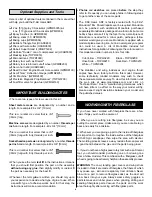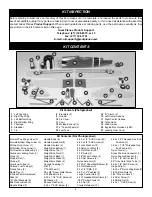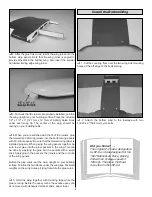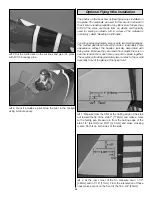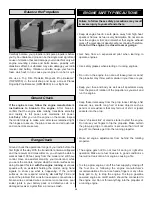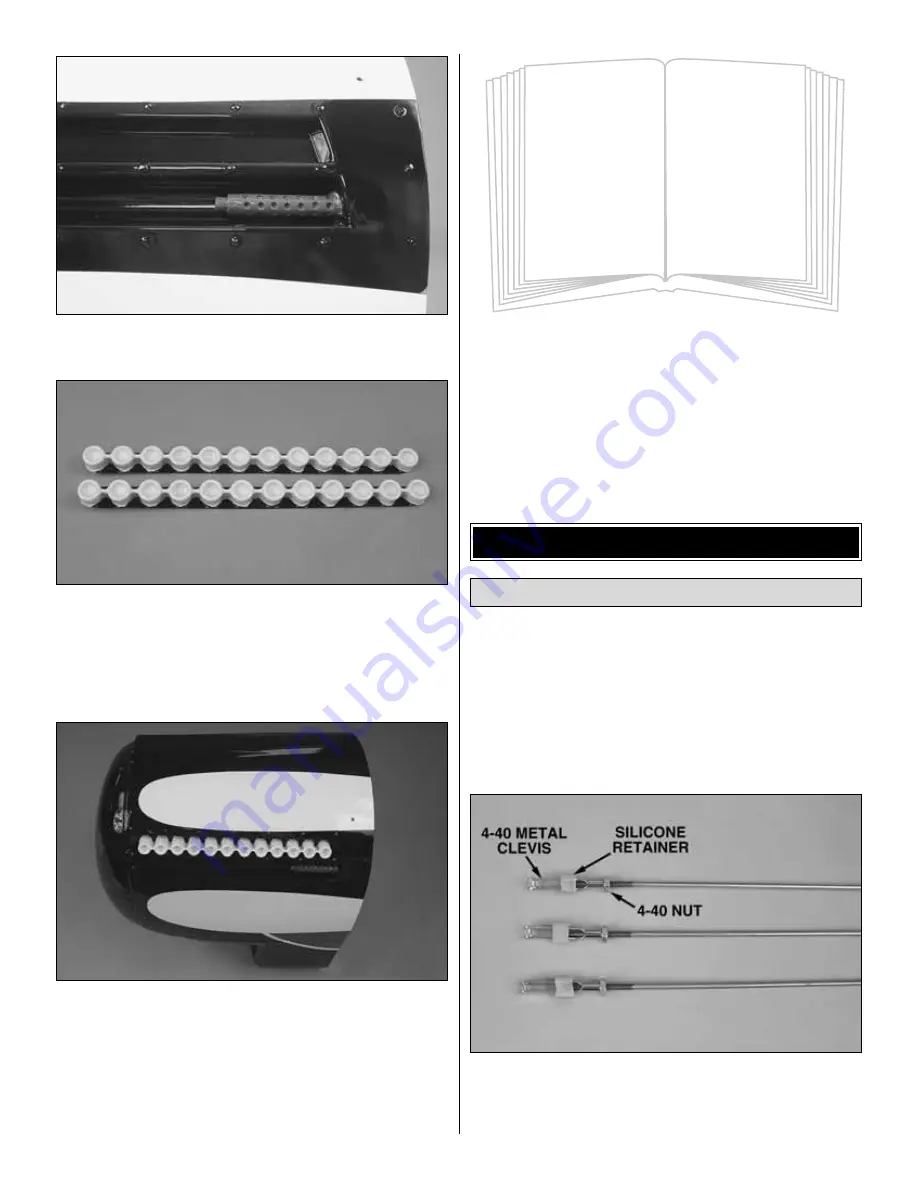
❏
2. Use epoxy to glue the machine guns in the cowl.
❏
3. Trim the exhaust stacks as shown. We used black paint
to fill in between the stacks. An alternative is to fill the back of
the stacks with a mixture of epoxy and micro balloons. Once
the epoxy cures, trim the exhaust stacks around the bottom.
❏
4. Use epoxy to glue the exhaust stacks to the cowl. Note
that the stacks face outward, not upward.
❏
5. This completes the installation of the engine and cowl.
You can now reinstall the cowl. Make sure when installing the
cowl that the fuel fill line is easy to access and the muffler
pressure line comes out the muffler clearance hole.
❏
1. Cut the covering from the pushrod tube openings at the
rear of the fuselage. There are two located on the left side
and one located on the right. If you have trouble finding the
openings, slide a .096" x 36" [914mm] pushrod wire into the
tubes from inside of the fuselage, sliding it into the tube until
it pushes the covering away from the fuselage slightly. This is
where you should cut the covering away from the tubes.
❏
2. Locate three .096" x 36" [914mm] pushrod wires
threaded on one end. Thread a 4-40 nut onto the threaded
end of each wire. Thread a 4-40 metal clevis 15 turns onto
each wire. Install a silicone clevis retainer onto the clevis.
Install the Rudder and Elevator Servos
INSTALL THE RADIO SYSTEM
Did you know? ....
On July 10, 1931, the first order
for 46 of the P-6E Hawks was
placed. Of the 656 Hawks built,
more than 1/3rd were exported to
foreign countries. The lifespan in
the U.S. Army Air Corp was short
due to the development of the
Boeing P-26A monoplane.
18

